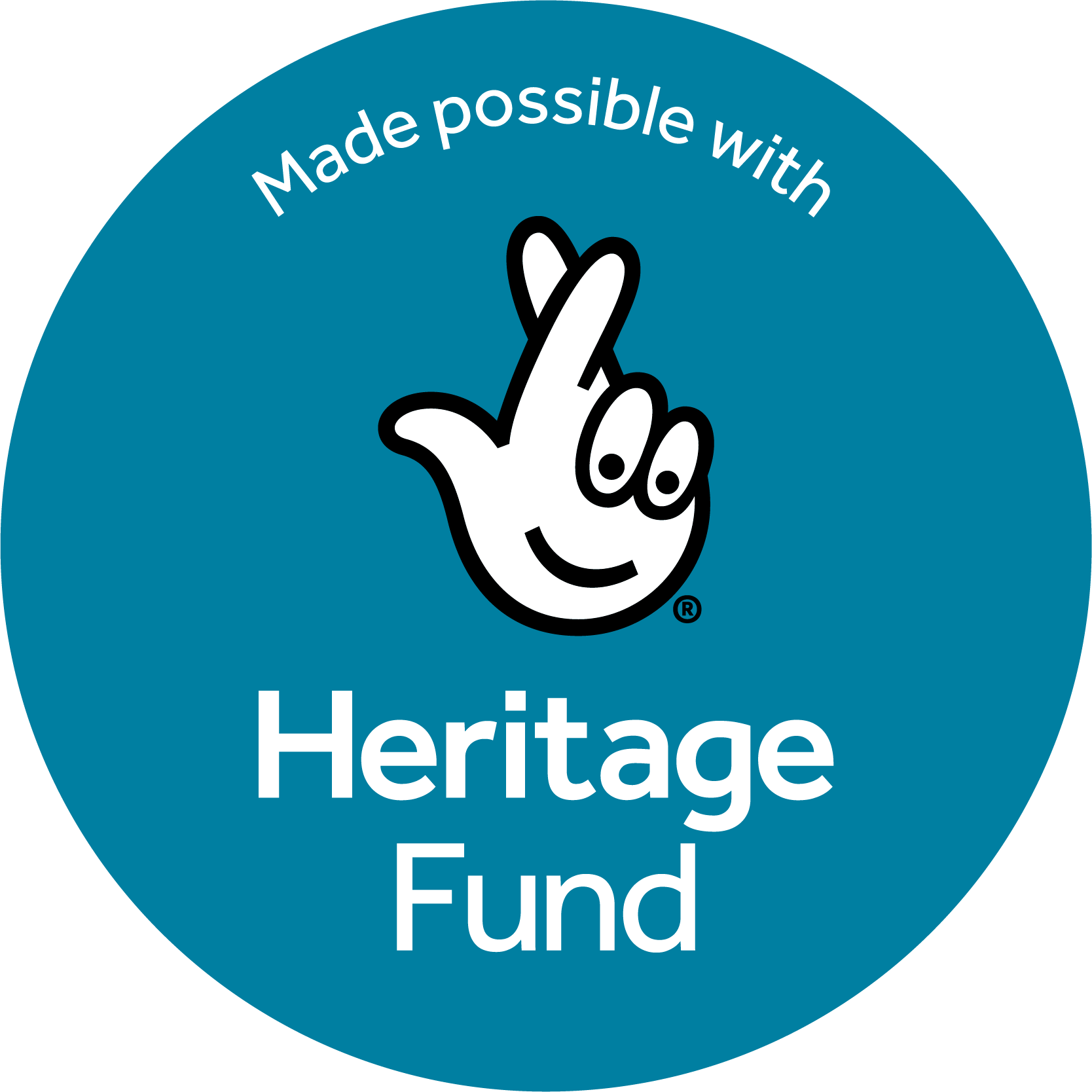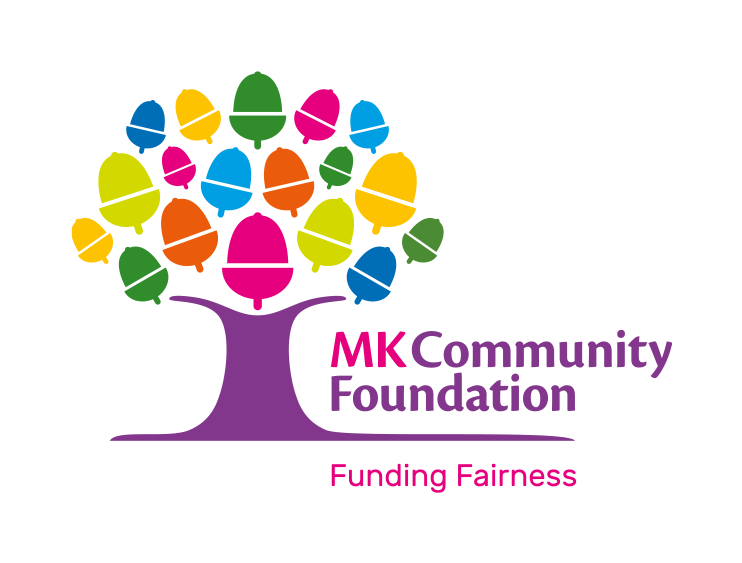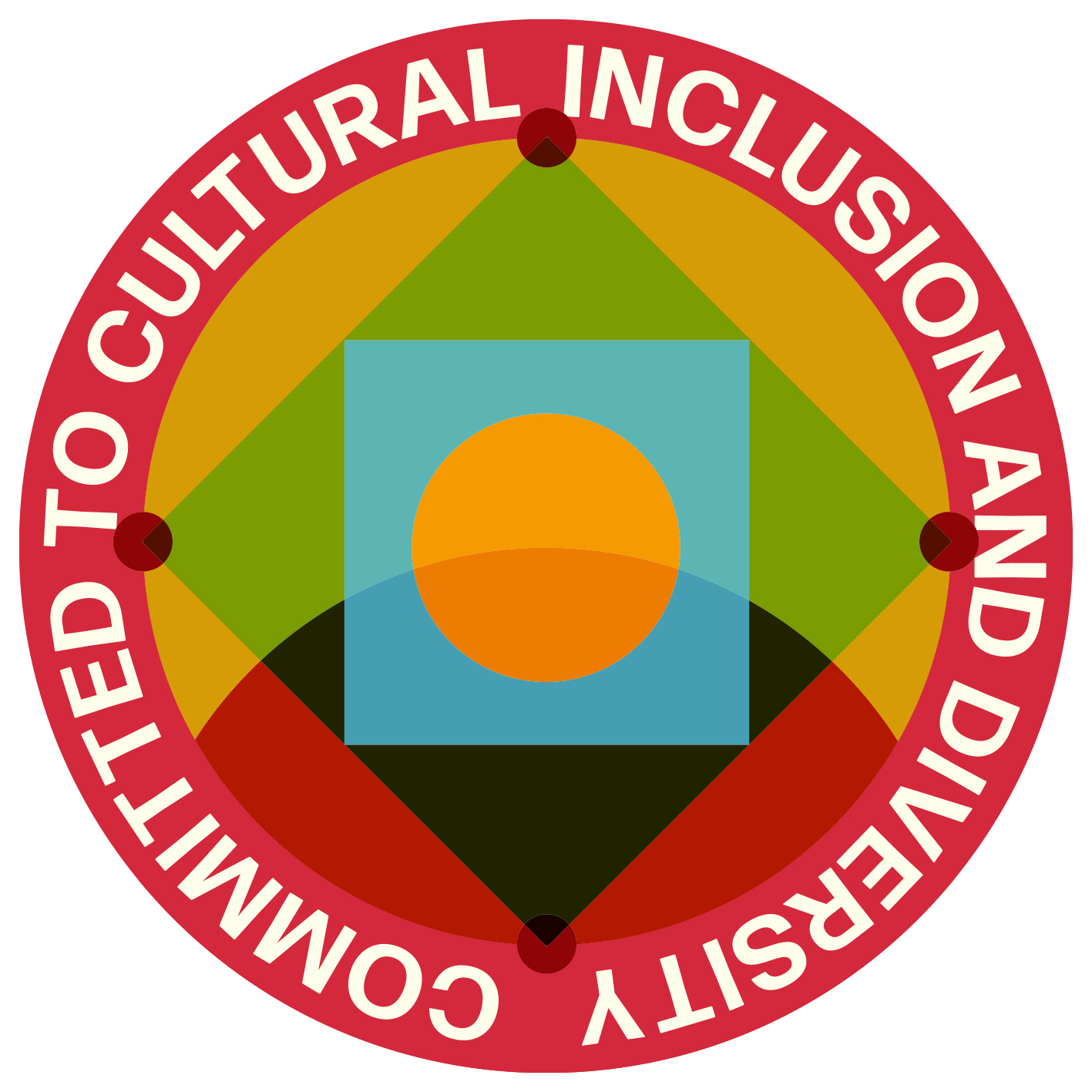Dame Ann Limb DBE DL
FRSA
Inside Out by
Boyd & Evans


In this first of our Twenty for Twenty articles, we ask Dame Ann Limb to tell us about an artwork from the Milton Keynes University Hospital Art Collection.
Which work in The Collection have you chosen to talk about?
Large-scale photographic work - Inside Out (2018) by Boyd & Evans (Fionnuala Boyd and Les Evans), seen at the main entrance of the Hospital.
When and how did you first see it?
I first saw this work when I came to the new entrance of the hospital in late 2018 with my wife for a cardiology appointment. I was immediately struck by how bold and uplifting it is as patients and visitors enter the hospital. I find it deeply reassuring and ‘normal’ which can help when people are often worried by what might be ahead.
What first interested or attracted you to this artwork?
I have loved Boyd & Evans’ work since I first came across it when I arrived in Milton Keynes in 1986 - although they have been working collaboratively since 1968.
I am attracted to the large scale photographic work because photography seems to me to be an art form that is so expressive of all the new city of Milton Keynes embodies.
Do you remember how seeing this work made you feel?
This work makes me feel both alive and reflective.
It captures the modernity and vibrancy of Milton Keynes and at the same time reminds us that nowhere in this city of trees is any resident less than a five minute walk from a green space and the sense of calmness and wellbeing we derive from nature.
In general, what kind of impact do you think seeing art at MKUH has on your experience of being on the hospital site?
I have been a long-time advocate of what is now called ‘social prescribing’ i.e. a belief that many health issues can be assuaged, alleviated, and even arrested by the power of creativity and art. I served as Chair of Arts for Health MK for six years from 2006 – 2011 during which time I saw at first hand through my walks in the hospital and my chats with patients, staff and visitors just how much seeing artworks, poems, and stories displayed in the hospital helped healing and recovery.
Contributor: Ann Limb
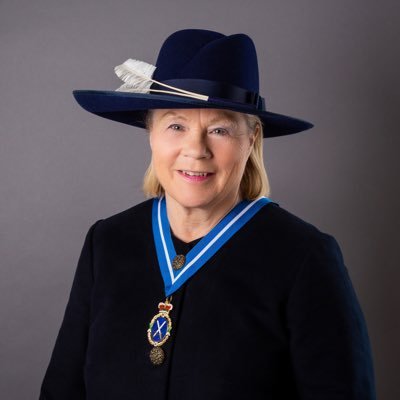 Local resident and former Arts for Health MK
Chair Dame Ann Limb DBE DL FRSA is a highly regarded British educationalist,
business leader, charity chair and philanthropist. Ann has been serving as High
Sheriff of Buckinghamshire for the last year. Other noteworthy public
appointments include Chairing the Scout Association for six years from 2015
(the organisation's first woman Chair since it's 1907 foundation), and in 2021
becoming Chair of the education and skills institution, City & Guilds (the
first female Chair in its 143 year history).
Local resident and former Arts for Health MK
Chair Dame Ann Limb DBE DL FRSA is a highly regarded British educationalist,
business leader, charity chair and philanthropist. Ann has been serving as High
Sheriff of Buckinghamshire for the last year. Other noteworthy public
appointments include Chairing the Scout Association for six years from 2015
(the organisation's first woman Chair since it's 1907 foundation), and in 2021
becoming Chair of the education and skills institution, City & Guilds (the
first female Chair in its 143 year history).
Georgia Tillery Randak
Testing Hattie by Martin Grover
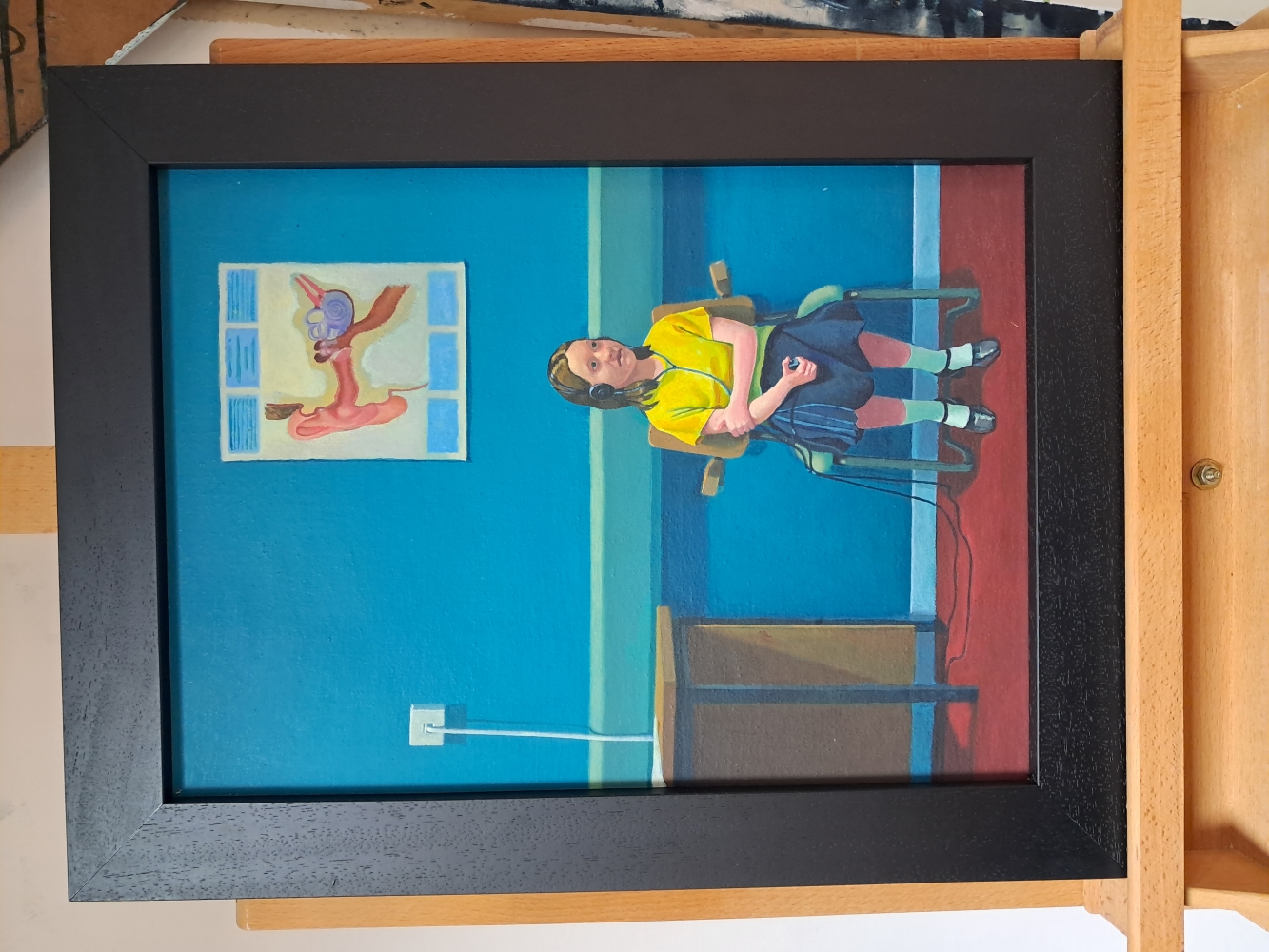
In the next instalment of our Twenty for Twenty articles, we ask our Associate Artist and Creative Play project lead Georgia Tillery Randak to tell us about an artwork from the Milton Keynes University Hospital Art Collection.
Which work in The Collection have you chosen to talk about?
Martin Grover’s oil painting Testing Hattie (1997-98).
When and how did you first see it?
I am a commissioned artist for Arts for Health MK but also was a patient when I gave birth to my son last year. Memories of both experiences blur into one.
What first interested or attracted you to this artwork?
I was first intrigued by the girl in the painting, I had many questions, why is she there? Is she ok? What is she listening to? How is she feeling? I wanted to know her story. I was also intrigued by the diagram of the ear above her and how we see the ear working with her listening to music. I wanted to join her because she looked alone.
Do you remember how seeing this work made you feel?
I felt concern at first and nerves being in a doctor’s room waiting for a diagnosis. I felt quite helpless. But I believe the music is soothing the girl and making her feel motivated to take on whatever might face her.
In general, what kind of impact do you think seeing art at MKUH has on your experience of being on the hospital site?
I think it provides moments of escape but also reflection. It brings stories to the hospital and allows you to transport yourself away from the clinical hospital.
Contributor: Georgia Tillery Randak

Georgia is a local theatre practicioner / performer and director of Theatre and Outreach at the Black Sheep Collective. She is also Project Coordinator for Arts for Health’s current Creative Play music and song courses for mums and babies.
Find out more here: https://artsforhealthmk.org.uk/Creative-Play
Sharon Paulger
Yellow Series by Julia Ball

Yellow III, Print, 1970, Julia Ball; from the Milton Keynes University Hospital Collection.
In the next instalment of our Twenty for Twenty series, we ask the former Arts for Health MK Director and current exhibiting artist Sharon Paulger to select an artwork from the Milton Keynes University Hospital Art Collection.
Which work in The Collection have you chosen to talk about?
Yellow Series, by Julia Ball, a series of four prints made in 1970, they can be viewed together on Level 1 of Milton Keynes University Hospital between wards 2 and 3.
When and how did you first see it?
I guess I first saw these when I started to work as Director for Arts for Health MK and was acquainting myself with the hospital’s art collection. I am now a patient and an artist.
What first interested or attracted you to this artwork?
It was both the colour and the artist that attracted me.
Colour is important to me and affects my mood. Seeing the light bright yellow of Ball’s prints was joyous. Framed by the courtyard windows, the prints make a natural connection with the greenery outside.
I was already familiar with Ball’s work. She is a Cambridgeshire based artist who gets inspiration from the flatlands and the fens. Having grown up in that landscape I have a natural affinity to her abstract prints and paintings.
Now, as I develop my own arts practice, I find inspiration in Ball’s use of colour and screen printing.
Do you remember how seeing this work made you feel?
On first seeing these prints I felt both proud and responsible as the new custodian of the collection.
Now, when I am at the hospital as a patient I like to visit them. I am irritated by the ‘bed parking’ sign that is on the wall below them. It reminds me of my efforts to get that moved and the complexities of managing a hospital art collection.
In general, what kind of impact do you think seeing art at MKUH has on your experience of being on the hospital site?
As a patient I really enjoy seeing art in the hospital. There is always something interesting to look at and although I know the collection pretty well there are nice surprises with new additions or the temporary exhibitions. It is a good distraction from the stress of my treatment.
Contributor: Sharon Paulger

Milton Keynes based artist and former Arts for Health MK Director Sharon Paulger recently completed an MA Fine Art: Digital with the University of the Arts London after a career in arts management.
You can currently see some of her artworks in Green Zone of the hospital near the cook-chill entrance as part of our temporary exhibition programme. Her vibrant artworks take a mixed media approach focusing on the use of sustainable materials.
Find out more here: https://artsforhealthmk.org.uk/Sharon-Paulger
Image: Just to Fill the Space (2022), Sharon Paulger. Screen prints on cardboard and reclaimed wood 50 x 50cm
Susan Brown FRPS
The Camel by Chris Campbell
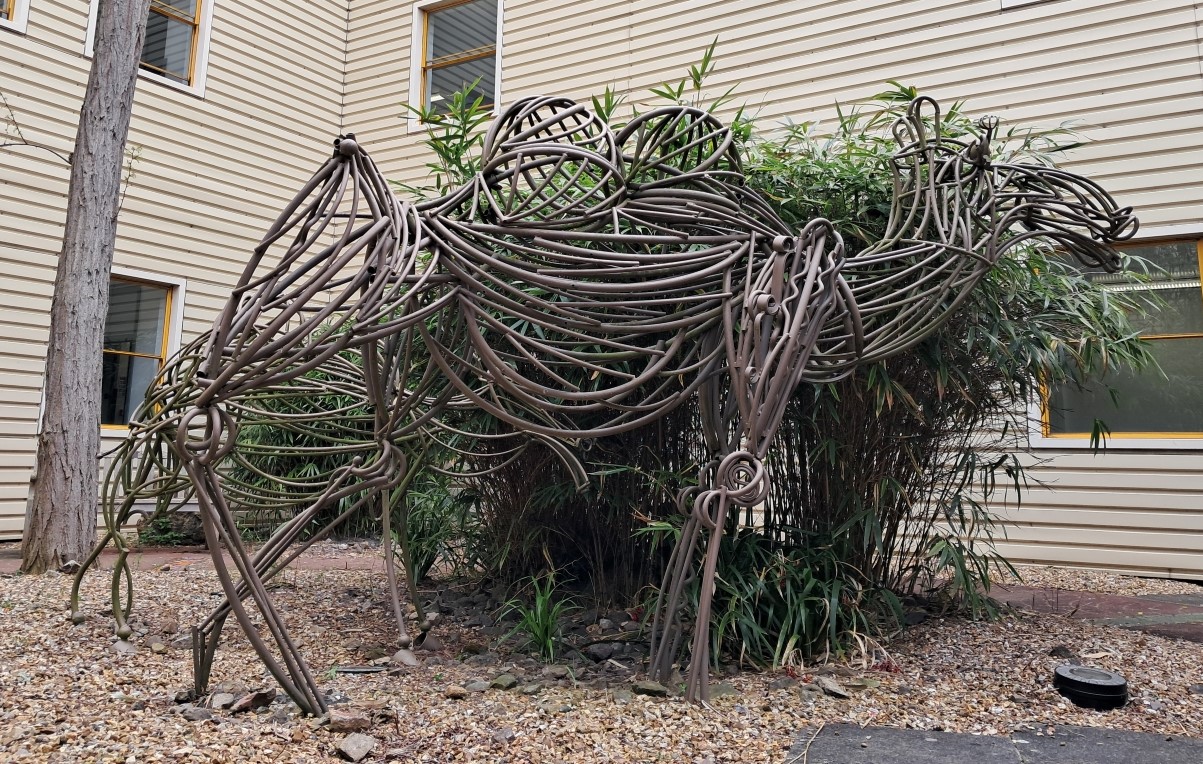
Camel [new] steel rod sculpture; from the Milton Keynes University Hospital Collection. Original artwork dates: 1984.
In the next instalment of our Twenty for Twenty series, we ask a founding member of the hospitals’ voluntary Arts Committee Susan Brown to select an artwork from the Milton Keynes University Hospital Art Collection.
Which work in The Collection have you chosen to talk about?
I would like to reminisce about ‘The Camel’ (past and present) by Chris Campbell situated in one of the many courtyards. The original sculpture, made in wood, was funded by ‘English Partnerships’ when the Hospital first opened in 1984.
When and how did you first see it?
I first saw The Camel when my Husband was appointed as an ENT Surgeon when MK Hospital was opened. The sculpture gave a point of interest and distraction walking round what seemed like endless hospital corridors.
What first interested or attracted you to this artwork?
Sadly one day the head fell off the Camel due to wood rotting. At this time I was a volunteer with MK Arts for Health doing their marketing and fundraising and the first I knew of the Camel’s demise was a telephone message from the local radio station as they had received many calls from distressed members of the general public about vandalism in the Hospital.
I was invited to be interviewed by the radio to explain what had happened and tell them more about MK Arts for Health. The poor Camel was not vandalised, just old age. The outcry made me realise how the general public really did notice and appreciate the artworks that surrounded them in the hospital whether a visitor, patient or member of staff. The interview also gave an opportunity to explain to the vocal critics who considered money being spent on artworks should be used for medical equipment, that funding was not from hospital accounts but from generous benefactors, Arts Council etc. and that art is therapeutic.
I approached MK Partnerships (formerly English Partnerships) to see if they would fund a replacement for the damaged camel, they were supportive. MK Arts for Health then approached Chris Campbell who agreed to make a new sculpture, this time in metal for longevity. When the new sculpture was delivered it arrived with a baby, both are still loved by many today.
Sometimes it takes a catastrophe to illustrate the public’s interaction and appreciation of art in healthcare settings.
Do you remember how seeing this work made you feel?
The new Camel was celebrated with joy and having a young one made it even more endearing, I loved watching the children being lifted to view and see the pleasure on their faces whilst doing art tours of the hospital. This sculpture has certainly become a legendary part of the art collection at MK Hospital.
In general, what kind of impact do you think seeing art at MKUH has on your experience of being on the hospital site?
Art at MKUH has without doubt had a huge impact. People who would never visit an art gallery have been introduced to art in many forms. The artworks chosen are selected carefully to give a feeling of wellbeing, not challenging, but a distraction from pain and suffering. Studies have shown that art, in all its forms including music, performance, paintings and sculpture etc. can lower blood pressure, give a sense of calm, thereby shortening length of stays in hospital.
Contributor: Susan Brown FRPS
Susan and her husband Peter Brown were founding members of a Voluntary Arts Committee when the hospital first opened. Together they were instrumental in evolving it into the organisation Arts for Health MK in 2004.
Susan, an artist and fellow of the Royal Photographic Society, has kindly donated an artwork, Birch Tree by the Lake (2024) a limited-edition photographic print, to the Milton Keynes University Hospital Art Collection to mark Arts for Health MK's 20th anniversary.
Peter Brown FRCS
Monumental Family by Jon Buck

The Monumental Family (1996) from the Milton Keynes University Hospital Collection.
In the next instalment of our Twenty for Twenty series, we ask founding member of the hospitals’ voluntary Arts Committee Peter Brown to select an artwork from the Milton Keynes University Hospital Art Collection.
Which work in The Collection have you chosen to talk about?
Jon Buck’s The Monumental Family, cast in bronze at the Pangolin Foundry and exhibited at Sculpture 2000 [at MKUH].
When and how did you first see it?
When it was delivered to the Sculpture 2000 exhibition organised by my wife, Sue, and I.
This was the first major exhibition we had organised at the hospital, and it was appropriate that it was to mark the Millennium. We knew Rungwe Kingdon, owner of the Pangolin sculpture foundry, and were delighted when he agreed to curate such a major exhibition for us free of charge.
What first interested or attracted you to this artwork?
We knew and admired Jon's work, and at this time his sculptures were representational but not realistic. More an artistic distortion to emphasise an emotion perhaps. For a sculpture to be in a hospital setting with anxious patients and relatives passing by it could not be too challenging. The works needed to be emotionally uplifting and settling rather than disturbing. I felt that The Monumental Family fulfilled these criteria.
The size of the arms and legs of the figures are larger than life and the three figures are intertwined in an embrace with the central figure protecting the other two. Rather than looking heroic in a Soviet-era sense, the faces express concern and mild anxiety. This group is empathic with the patients that pass by
and seems to understand their feelings.
Do you remember how seeing this work made you feel?
In spite of a nurse commenting that all she could see when leaving the hospital were "big bottoms", it made me feel that this was one of Jon's best and most powerful sculptures. I loved it!
Many of the sculptures in that exhibition were sold and several remain in the hospital having been purchased and then donated.
Imagine the delight of my wife and I when Sir Peter Thompson said he would purchase the “Family" and donate it to the hospital - the dream of it adorning the entrance to the hospital had come true! What amazing philanthropy. Afterwards any TV items including the hospital always opened with an image of The Monumental Family. It had become an icon!
In general, what kind of impact do you think seeing art at MKUH has on your experience of being on the hospital site?
Many patients have commented to me when I worked in the hospital how they found peace and an escape from some of their worries when walking around the art works, or hearing live music being played, or getting involved in sharing their emotions in group poetry writing
I am so happy to see that Arts for Health MK has endured, and I wish it all the best for the future and hope it will continue to give some uplift for a very long time to the many patients who will pass by.
Contributor: Peter Brown FRCS
Peter, a former ENT surgeon at MKUH and his wife Susan Brown were founding members of a Voluntary Arts Committee when the hospital first opened. Together they were instrumental in evolving it into the organisation Arts for Health MK in 2004.
Office
Arts for Health Milton Keynes
Facilities Directorate
Milton Keynes Hospital
Standing Way
Eaglestone
Milton Keynes
MK6 5LD
Privacy Policy
Arts for Health Milton Keynes
Facilities Directorate
Milton Keynes Hospital
Standing Way
Eaglestone
Milton Keynes
MK6 5LD
Privacy Policy
Arts for Health Milton Keynes is the working name of MK Arts for Health charity number 1107625 company number 05137693


